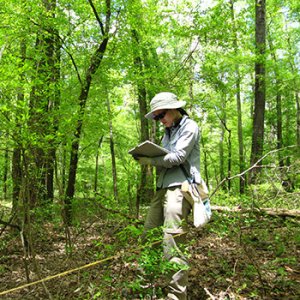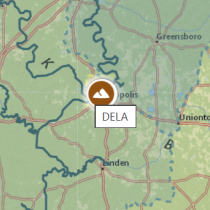NSF approves transition to operations of field sampling at 13 more sites
August 4, 2016
In early August, the National Science Foundation (NSF) gave its approval to transition observational sampling to operations at 13 terrestrial field sites bringing the total number of terrestrial sites with observational sampling to 27, representing over 50% of planned sites. Kirsten Ruiz, Deputy Observatory Director, noted that “this also means field sampling at terrestrial sites is up and running in 15 out of NEON’s 20 domains.”
Each terrestrial field site is made up of two subsystems: the Terrestrial Observation System (TOS) and the Terrestrial Instrument system (TIS). The TOS includes data collection such as Plant Phenology and Small Mammal Box Trapping, i.e., data collected by field technicians at each site. The TIS includes data collection such as Precipitation & Triple Aspirated Air Temperature, i.e., data collected by automated sensors on towers or in the ground. Both systems must go through a rigorous set of reviews to formally transition to operations. Approving terrestrial observational sampling means that the NSF and Battelle (which now operates NEON) have officially concurred that the TOS subsystem at a specific site has completed construction, is functional and is ready for initial operations. Specifically, all required infrastructure is in place, the system has been tested and personnel have been hired and trained to operate the subsystem at that site. NEON project staff also have to successfully collect and ingest data (or a subset of data) from that subsystem/site. Rick Farnsworth, NEON program manager for Battelle says this latest round of approvals reflects a strong partnership between the NEON team and NSF. “The speed of approvals on these systems is reflective of both the hard work done by the scientists and team here at NEON and the outstanding cooperation we’ve been getting from our NSF colleagues. Everyone is committed to getting this observatory operational as quickly as possible.”
How much of NEON’s field site infrastructure is now in operations?
27 of the 47 TOS subsystems have been transitioned to operations in the last 15 months including the 13 that transitioned this week. Seven additional TOS subsystems are expected to complete construction this year and transition to operations, with the final 13 sites expected to begin data collection in 2017. In addition, 17 Domain Support Facilities have transitioned to operations.
The TIS subsystem for each site requires three phases of sensor installation due to the placement and quantity of sensors at any given site. Phase 1 & 2 sensor installation include meteorological sensors. Phase 3 installation includes the eddy covariance and soil sensors.
Meteorological sensors have transitioned to operations at 12 TIS sites. The TIS systems at 16 additional sites are currently being prepared for submission to NSF for formal transition to operations approval. NEON has also completed installation of soil and eddy covariance instrumentation at four terrestrial sites.
Aquatic sites are made up of observational systems (AOS) and instrument systems (AIS) as well. Currently, 14 AOS subsystems and 4 AIS subsystems are being prepared for submission to NSF for formal transition to operations approval.
The TOS sites that officially transitioned this week include a mix of relocatable and core sites across varying ecosystems in U.S.:
- D02R1 SERC TOS
- D02R2 BLAN TOS
- D04C GUAN TOS
- D05R1 STEI TOS
- D05R2 TREE TOS
- D06C KONZ TOS
- D07R2 GRSM TOS
- D08R1 DELA TOS
- D09C WOOD TOS
- D13C NIWO TOS
- D13R1 MOAB TOS
- D15C ONAQ TOS
- D19R3 HEAL TOS
Learn more about NEON's data collection methods.

